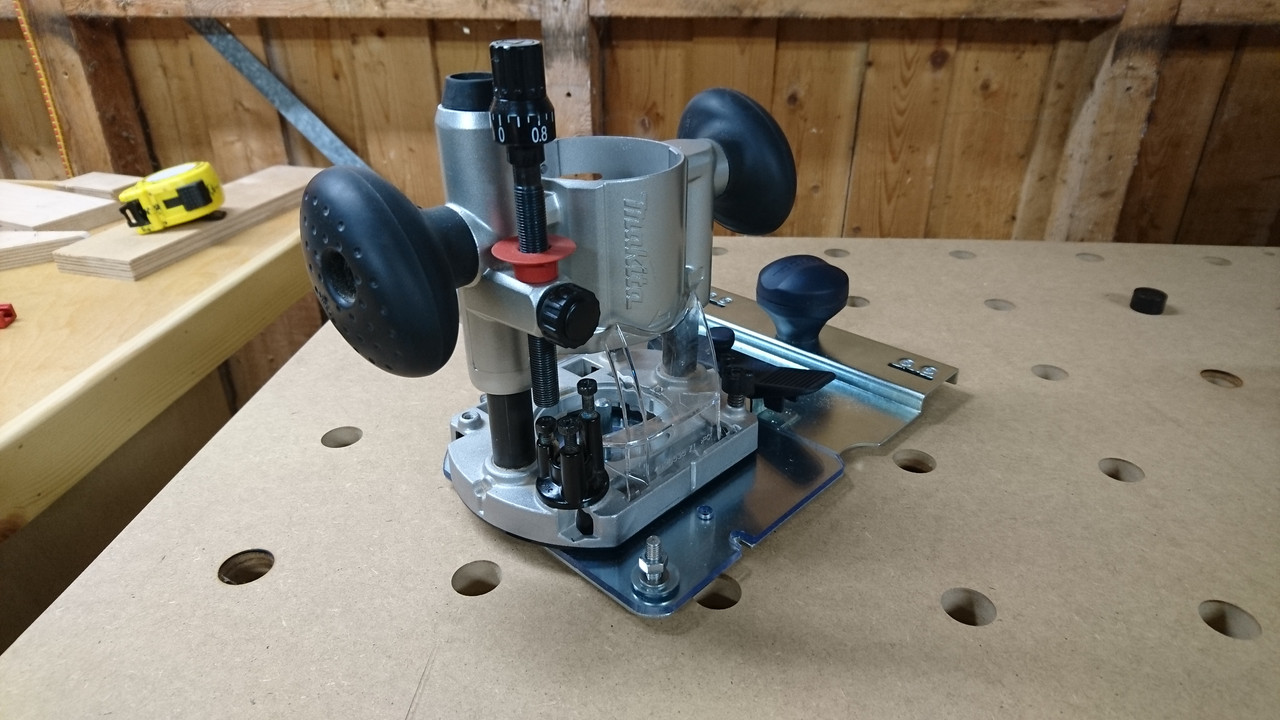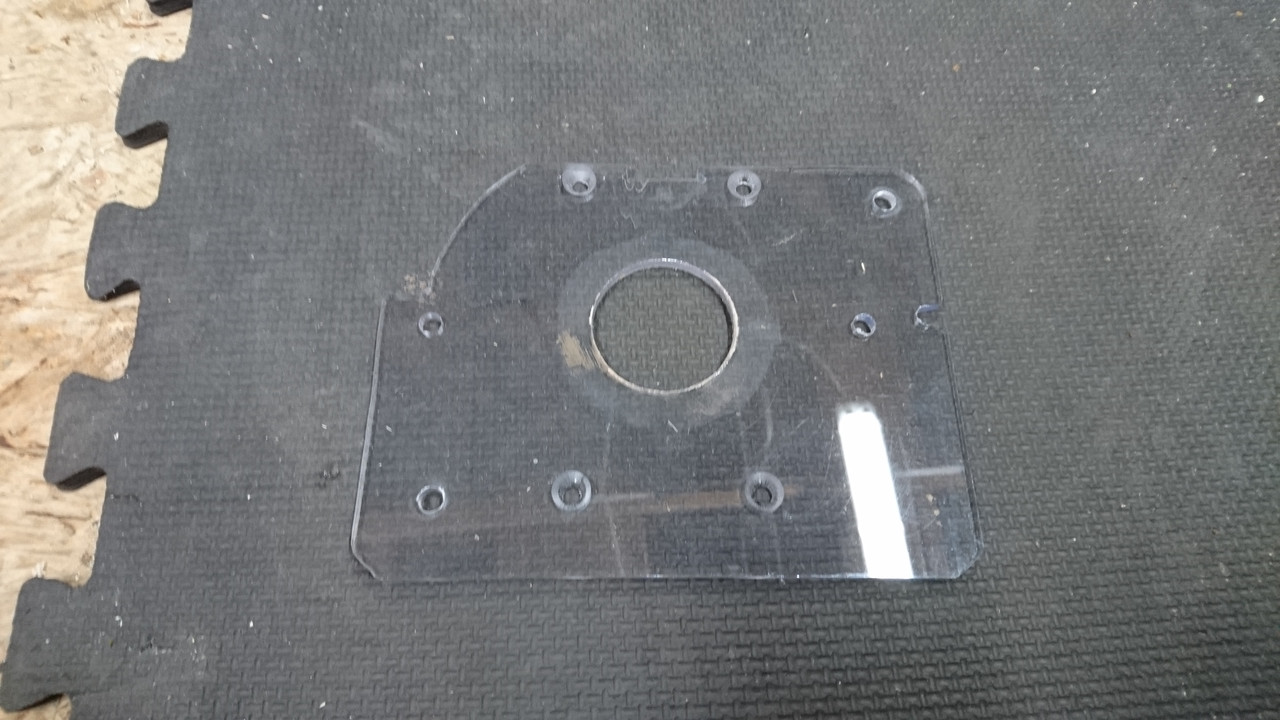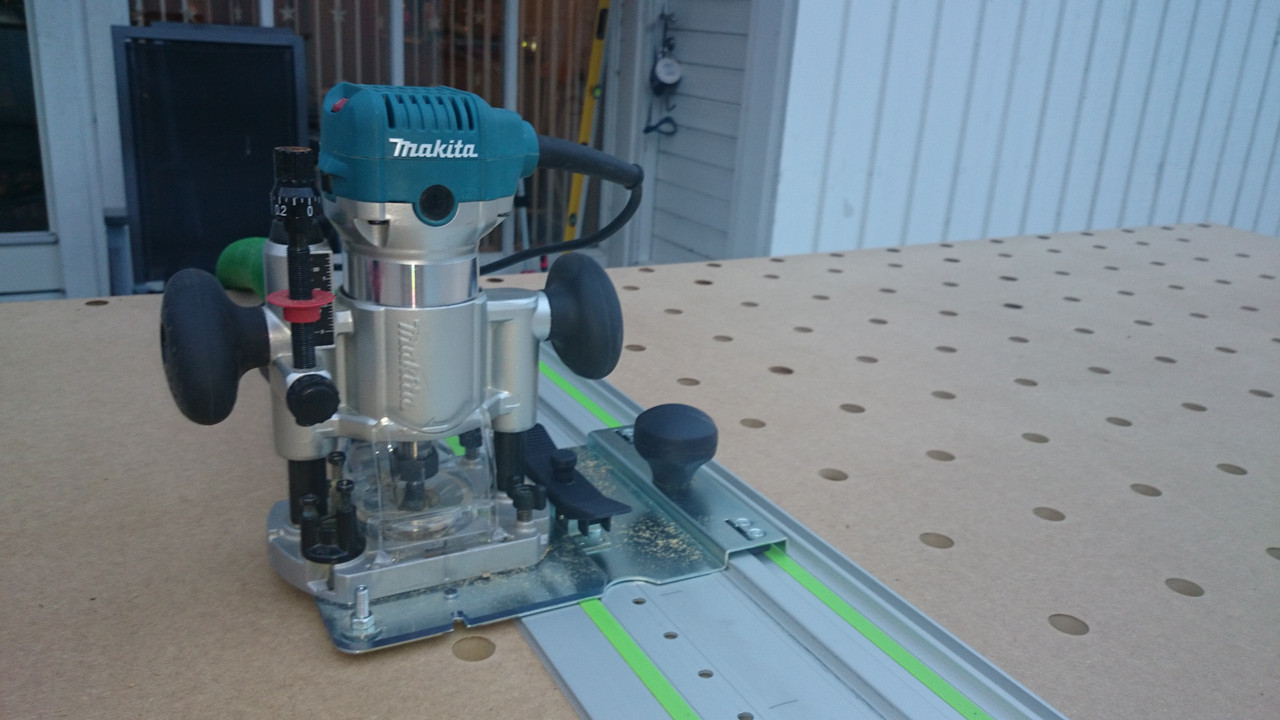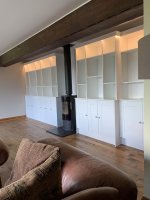nicholam77
Member
- Joined
- Mar 7, 2019
- Messages
- 118
Hi all,
Long story short I've made several homemade jigs to mimic the functionality of the LR32, and at the end of the day I'm just not happy with the accuracy.
I love Festool but realistically as a hobbyist I can't be shelling out $500-$1k for a tool here and there. So a Festool router is off the table. I already have a DeWalt 618 router with plunge base, that I really like. And a collet adapter and good 5mm brad point bit. But I'd be willing to grab a barebones LR32 kit with the plate, centering mandrel, and end stops.
Searching the forum here I see one failed attempt to get the DW618 to match up to the LR32 baseplate:
https://festoolownersgroup.com/index.php?pretty;board=festool-tools-accessories;topic=lr-32-hole-system-help-whats-realty-necessary.msg119304#msg119304
Applicable section from that thread:
Looking at pictures of the LR32 baseplate and the Festool OF1010 and OF1400 routers, it's difficult for me to tell exactly how they attach.
I'm wondering if there would be any way to add a polycarbonate or acrylic sub-base to the DeWalt 618, that then the hold down clamps attach through. Something like done with this Makita...



All credit to [member=30025]knutmagne[/member] on those images.
So... looking for any one who can tell me more! If the router is screwed onto the LR32 base, do the screws stick out on the underside? Is there room for this? Anyone have a DW618 that they have since gotten to work with this system? Anyone have a pic of how the DW618 could sit on the LR32 plate?
Or even could anyone give me measurements of the area I'd have to work with to position on the baseplate, without interfering with the clamp down posts or the indexing pin lever?
Maybe it's just not possible but if someone happens to have this router and the LR32 plate any insight would be much appreciated!
Long story short I've made several homemade jigs to mimic the functionality of the LR32, and at the end of the day I'm just not happy with the accuracy.
I love Festool but realistically as a hobbyist I can't be shelling out $500-$1k for a tool here and there. So a Festool router is off the table. I already have a DeWalt 618 router with plunge base, that I really like. And a collet adapter and good 5mm brad point bit. But I'd be willing to grab a barebones LR32 kit with the plate, centering mandrel, and end stops.
Searching the forum here I see one failed attempt to get the DW618 to match up to the LR32 baseplate:
https://festoolownersgroup.com/index.php?pretty;board=festool-tools-accessories;topic=lr-32-hole-system-help-whats-realty-necessary.msg119304#msg119304
Applicable section from that thread:
Wood_Junkie said:I drilled the holes in the LR-32 sled, to match up with the DW618 router body (this took some precise geometry). And attached it! ...
... And then realized that because of positioning the screws holding the DW plunge base would be scraping along the guide rail, which eventually would cause some rail damage, and putting the router off level (rocking on the screw heads). Since the sled is just sheet steel, there isn't enough material to countersink the screws. And the DW router base is webbed, not solid, so there's really no where else to tap new screw holes. And because of the size of the DW plunge base, there isn't a lot of option for rotating the base to fit in another orientation, unless you give up on having the bit centered in the LR32 sled.
There's no getting around it that I could think of. Unless you want to cut off the hold-down bolts on the LR32 sled. That'd give you some more options for rotating and aligning the router base for a bit better advantage. But I still don't think it would work and would have seriously ruined the LR32 sled. The Festool routers attach to the phenolic footings that serve as screw anchors, and they don't tear up the guide rail.
Looking at pictures of the LR32 baseplate and the Festool OF1010 and OF1400 routers, it's difficult for me to tell exactly how they attach.
I'm wondering if there would be any way to add a polycarbonate or acrylic sub-base to the DeWalt 618, that then the hold down clamps attach through. Something like done with this Makita...



All credit to [member=30025]knutmagne[/member] on those images.
So... looking for any one who can tell me more! If the router is screwed onto the LR32 base, do the screws stick out on the underside? Is there room for this? Anyone have a DW618 that they have since gotten to work with this system? Anyone have a pic of how the DW618 could sit on the LR32 plate?
Or even could anyone give me measurements of the area I'd have to work with to position on the baseplate, without interfering with the clamp down posts or the indexing pin lever?
Maybe it's just not possible but if someone happens to have this router and the LR32 plate any insight would be much appreciated!





